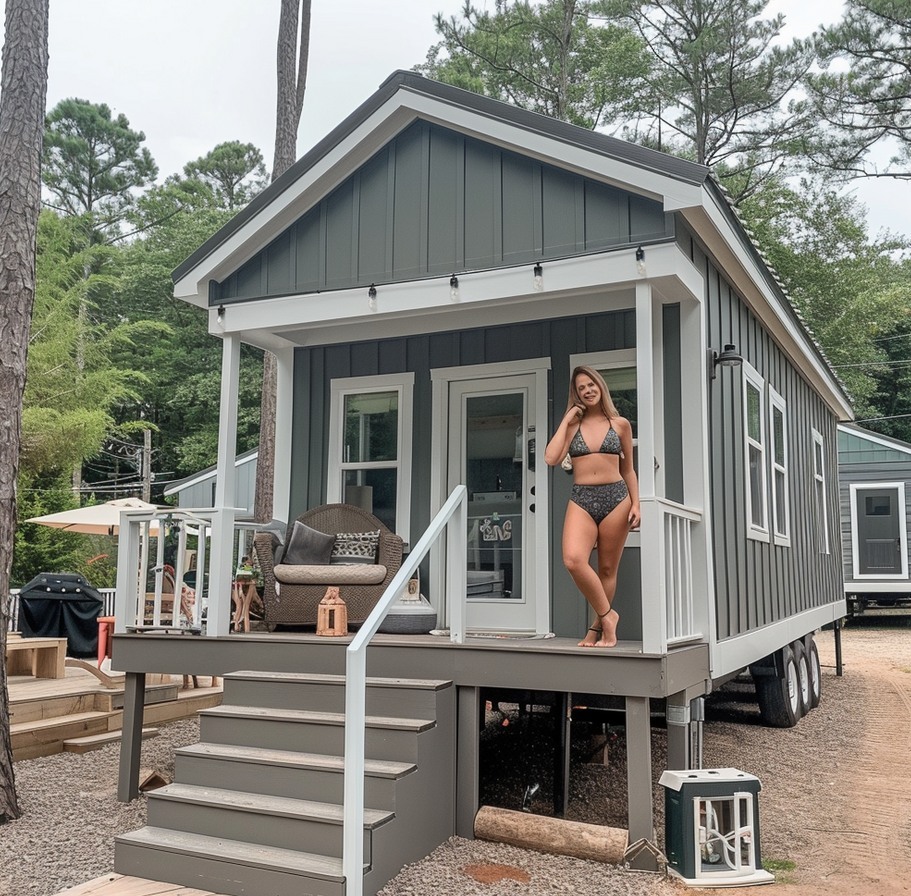27-year-old pays $0 to live in a ‘luxury tiny home’—how she built it for $4,000: ‘I forget I’m living in a shed’
Building My Microhome: A Journey to Affordable Living in Atlanta

In 2020, I embarked on an exciting adventure by constructing a microhome in the backyard of my 1,400-square-foot home in Atlanta, Georgia. With a budget of over $4,000, this small yet functional space has transformed my living situation, allowing me to cover my mortgage, property taxes, and utility expenses through rental income from my primary residence. This clever investment effectively enables me to live in my home for free—a dream come true for many.
#### Embracing the Microhome Trend
At just 296 square feet, my microhome may seem small, but it is designed to maximize every inch. I often find myself forgetting that I’m living in a shed rather than a conventional house. The trend of tiny houses is on the rise across the United States, offering an innovative solution to rising housing costs and the desire for a minimalist lifestyle. However, the process of building one isn’t as straightforward as it may seem.
If you’re considering constructing a tiny house in your backyard, here are some essential tips to guide you through the process:
#### 1. Research Zoning Regulations
The first step in your journey is to research zoning regulations in your area. Many big cities are beginning to relax laws on tiny homes in an effort to increase housing supply, while others maintain strict limitations on what can be built on private property. Understanding these regulations will save you time and potential legal issues down the line.
You can usually find zoning regulations listed with a property’s address on your city’s zoning map. A quick Google search with your city’s name along with the terms “zoning map” or “zoning office” can often lead you to the necessary resources.
If you’re still having difficulty navigating the regulations, consider reaching out to your city’s planning and construction division. They can provide you with the most accurate and up-to-date information, ensuring that you’re fully informed before beginning construction.
#### 2. Plan Your Design Wisely
Once you have a clear understanding of the zoning regulations, the next step is to plan your design. Think about how you will utilize the available space. Effective storage solutions and multi-functional furniture can significantly enhance the livability of your microhome. Consider incorporating features like foldable tables, built-in shelving, and storage under the bed to maximize functionality.
#### 3. Consider Utilities and Amenities
Incorporating essential utilities—such as electricity, water, and waste management—is crucial for making your microhome comfortable and functional. Decide whether you want to connect to existing utilities from your primary residence or explore off-grid options. Each choice comes with its own set of challenges and benefits, so weigh your options carefully.
#### 4. Get Creative with Materials
When constructing your microhome, consider using recycled or repurposed materials. Not only can this save money, but it can also add unique character to your space. Look into local resources for reclaimed wood, doors, and windows that can give your home a distinctive look while being environmentally friendly.
#### 5. Know Your Limits and Seek Help
While building a microhome can be a rewarding DIY project, it’s important to know your limits. If you lack experience in construction or design, don’t hesitate to seek professional help. Hiring a contractor or consulting with someone experienced in tiny home construction can save you time and ensure that your home is built to code and structurally sound.
#### Conclusion
Constructing a microhome in my backyard has been one of the best decisions I’ve made. It has not only provided me with a means to live economically but also enabled me to embrace a simpler, more intentional lifestyle. The journey of building a tiny house is filled with challenges, but with thorough research, careful planning, and a bit of creativity, you can create a space that meets your needs and allows you to thrive.
If you’re considering taking the plunge into the world of tiny living, remember to approach the process with an open mind and a willingness to learn. The rewards of having your own space, reduced expenses, and the freedom that comes with minimalism are well worth the effort. Happy building!





